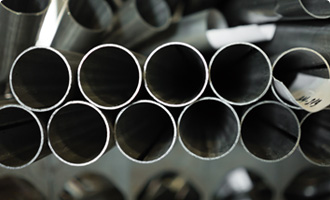1:100 – Broaden your investment horizon with our comprehensive commodities trading portfolio. From precious metals to agricultural commodities, we provide you with the tools and insights to trade global commodities markets.
- Trading precious metals is a process of buying or selling financial derivatives on these metals, as well as physical objects in the form of coins and bars.
- Gold, silver, palladium, and platinum are the main precious metals which serve today as an excellent investment and risk hedging instrument.
- The precious metals are traded on the commodity exchanges, the most famous being the London Metal Exchange.
What is Metals Trading?
The precious metals market is a sphere of economic relations that regulates transactions with precious metals and securities quoted in gold (gold certificates, bonds, futures, etc.). In turn, trading in precious metals is a process of making a profit by buying/selling physical gold, silver, or other valuable metal, which are presented in the form of futures contracts with a fixed expiration date or CFDs.
Basically, online trading of precious metals such as silver, gold, copper, palladium, and platinum is carried out to diversify risks and create a more balanced trading portfolio. Like other commodities, the value of precious and other non-ferrous metals is determined on exchanges, such as the London Metal Exchange, the Shanghai Futures Exchange, the Brazilian Commodity Futures Exchange, etc.
The international market of precious metals is a set of individual trading floors that specialize in the conclusion of purchase and sale transactions for precious metals, both based on spot and futures contracts. Unlike futures contracts for gold and silver, spot contracts are more convenient for long-term investors because they have no expiration date. This allows you to buy the precious metal on the exchange and keep it in your account for as long as you like. These contracts are not attached to the international benchmark. They reflect demand and supply in a country’s local precious metal market.
At the same time, prices correlate closely with world prices for precious metals because London is the center of price formation for precious metals, where spot prices for precious metals are formed through the London Bullion Market Association (LBMA). All the trading floors are oriented to the prices of this organization, and in case of sharp price difference, there is an arbitrage, which again brings the markets to balance.
Various trading strategies can be implemented with a combination of trading spot and precious metal futures contracts, such as hedging spot deliveries, etc. Besides, precious metals trading via spot contracts have no traditional characteristics of futures contracts, such as maturity, the necessity of guarantee, forward curve interest rate, and so on. There is also a difference in fees and charges between the exchange and the broker.
The price of precious metals is primarily determined by market conditions and factors that form the supply and demand balance. That is the volume of metal production on the one hand and demand among investors, manufacturers, jewelers, and other people who use this metal in their production. Discovery of new deposits, depletion of old deposits, implementation of new mining technology, or improvement of processing technology. All of these factors affect gold, silver, and other precious metals.
Also, it’s essential to remember fluctuations in the dollar because the world precious metal prices are mostly set in dollars. Some investment analysts even have a rule: if the dollar is getting cheaper, precious metals are getting more expensive. The general situation in the stock market also influences the price of precious metals. Separately, it’s possible to distinguish specific decisions made by different precious metals producers. For example, large producers can make a strategic decision and agree to suspend the production of metal to increase the market value of their production. A similar strategy is used by oil producers in the oil market.
Buying gold and other precious metals has always been considered a conservative investment. The prices of these assets grow steadily over the long term. However, the horizon is counted for years – from 10 years and more to get a good profit. That’s why investors use precious metals as a defensive asset in times of crisis. The main purpose of buying such assets is to reduce the portfolio’s overall volatility. However, unlike bonds and dividend stocks, one must understand that these instruments cannot generate cash flow. Their yields are purely speculative. As a result, if the value declines amid an economic crisis, the investor may face a long-term loss-making position.

